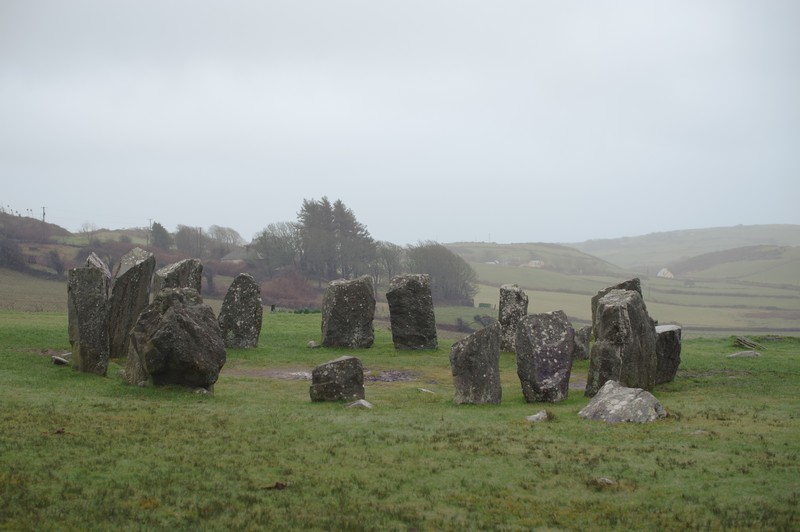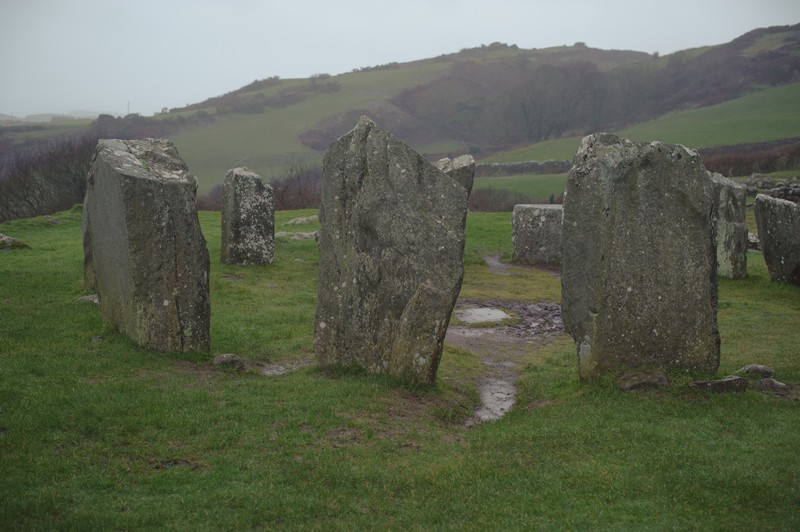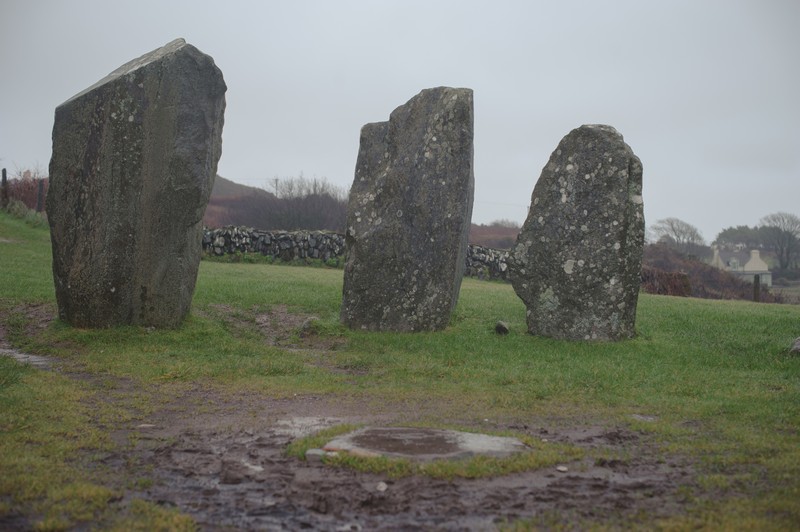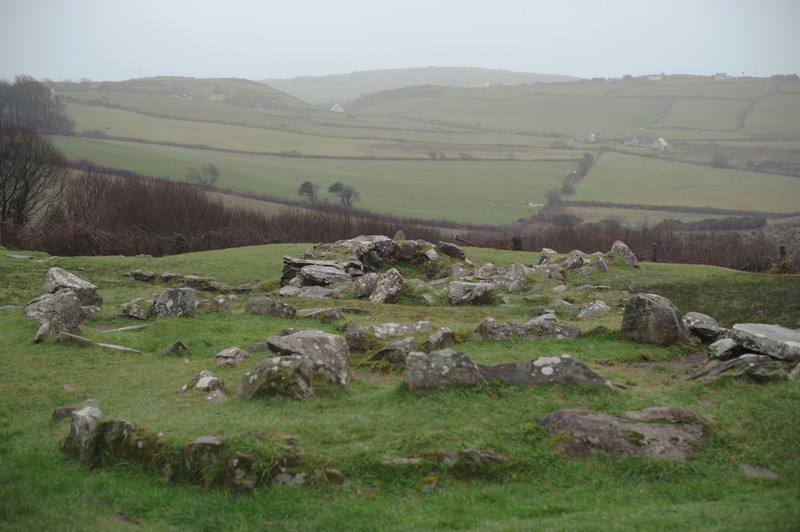From looking at the surrounding geography it can almost be guessed that the name of this place in Irish Gaelic would be An Drom Beag (The Small Ridge). As you may already know, stone circles were used in times of old as places of ritual, ceremony and also of burial. Excavations around Drombeg revealed a pit in the middle of the stones with a very old pottery vessel in it that was covering the remains of a young adolescent. Radiocarbon dating suggest that this site was active as recently as 1100 – 800 BC.
This circle has lasted quite well and consists of large stones carefully arranged in a particular order. Directly opposite the portal stones (the two tallest stones that mark the entrance of the stone circle that probably stand about 2 metres above the ground) is an axial stone which has two small cup shapes hollowed out and one has an oval marking, or ring, around it. As far as I could make out from the information signs near the stones, on winter solstice, 21 December, the sun sets behind the axial stone and in front of the portal stones.
As well as the stone circle, there remains of a hut site and cooking space (fulacht fiadh) that were excavated in 1957 and most likely dates all the way back to the Bronze Age.
This specific cooking area near the remaining hut foundations had quite a technique to it. Stones were heated in a fire or hearth area and then rolled to a well with plenty of water in it. The water then would be heated up by the stone and could be used for cooking meat, bathing, dyeing or even brewing. Another interesting thing that was excavated was a quern-stone (an almost bowl-like work space used for crushing grain).




